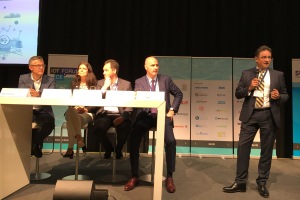› Forums › General › News (General) › Telcos admit IoT is failing to meet expectations
Tagged: SIServices_S13, Transport_V9
- This topic has 1 voice and 0 replies.
-
AuthorPosts
-
-
September 28, 2018 at 5:46 am #24933
Anonymous
- Topic 16
- Replies 0
- posts 16
#News(General) [ via IoTForIndiaGroup ]
In an inspirational Keynote address from Bela Virag, global head of Innovative Business Designs at analysts Arthur D. Little in Vienna, talked about the work of Australian incumbent network operator, Telstra who were invited to install 12 different camera angles at a UK football stadium, accessed by fans through their own app.
 It soon became clear the service could be enhanced by increasing this to 40 cameras, each offering a real-time view of the match. Telstra then added the ability to order popcorn and drinks via the app, and today it can show you where the toilet queues are shortest, where to park when you arrive and much more.
It soon became clear the service could be enhanced by increasing this to 40 cameras, each offering a real-time view of the match. Telstra then added the ability to order popcorn and drinks via the app, and today it can show you where the toilet queues are shortest, where to park when you arrive and much more.So, Telstra have gone from selling connectivity to using their broader skills to innovate and launch brand new advertising-funded services for the connected consumer. Progress has often been so spectacular in business-to-business (B2B) Internet of Things (IoT) connections, that we can overlook the strides made in B2C (business to consumer) applications.
He gives four examples of non-telecom players moving into the 5G space. Ericsson and Comau are reportedly working on a 5G-based smart manufacturing solution, Facebook is rolling out its Terragraph network in San Jose, California to gain gigabit speed throughput, Scania and Ericsson are improving the efficiency of “platooning” trucks in a semi-autonomous convoy, and NEC is developing a smfart video security system based on automated surveillance and alarms.
-
-
AuthorPosts
- You must be logged in to reply to this topic.
